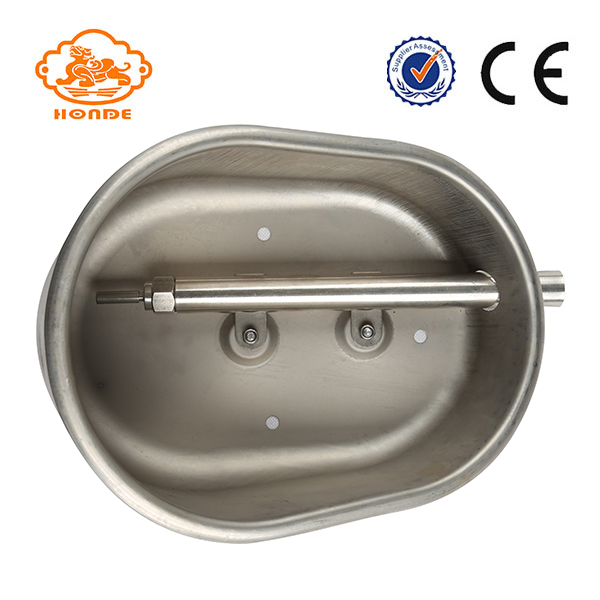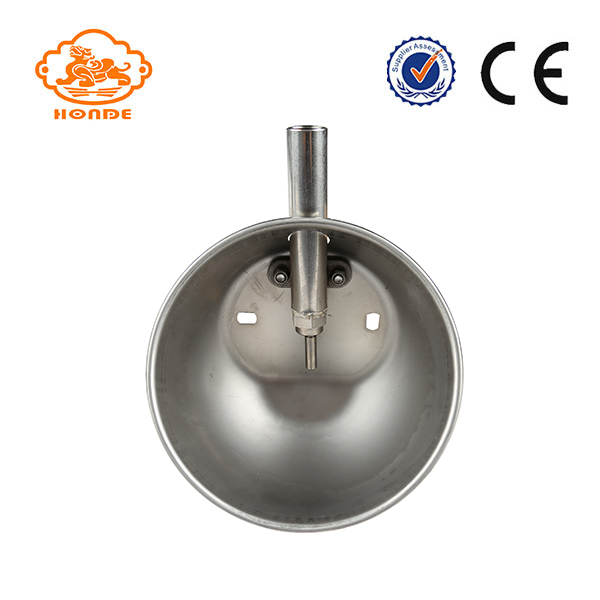Welcome to our website:
1) After the eggs are removed from the storage room, they must be naturally warmed up in the hatchery. After the temperature of the egg table reaches room temperature, the eggs are incubated in the trays. The position of the tray is the same as that of the storage trays. In addition, the hatching machine is cleaned, disinfected, debugged, and warmed up.
(2) Incubation temperature and humidity requirements, if the incubator sensor is placed in the space outside the egg tray in the incubator, the incubation space temperature is 38.5 degrees on the 1st to 7th days after hatching, the 8th to 18th days are 38 degrees, 37.5 degrees on the 19th to 21st days. If the incubator sensor is placed on the egg in the egg tray, then the egg temperature can be maintained at 37.8-38 degrees from beginning to end. Incubation humidity is different according to the incubator. The heating tube is directly placed in the old incubator heated in the incubator. The inside of the machine is very windy. Incubation humidity is 60% in the 1st to 20th days after hatching, and in the 21st to 24th days it is 70. %. Heating with warm air, a small incubator with a fan inside the machine, the incubation humidity of 45% on the 1st to 20th days after hatching, and 60% on the 21st to 24th days. (3) Turning the eggs on the 1st to 20th days after hatching, turn the eggs once every 2-3h, turn the eggs 8-12 times a day, turn the angle 90 degrees so that all parts of the embryo heat evenly to prevent embryos Sticky shell. If the temperature difference in each part of the incubator is 0.5°C, adjust it once a day, that is, aligning the upper and lower egg trays, and aligning eggs around the egg tray with the central egg to compensate for the temperature difference. (4) Eggs: The first egg was carried out on the 7th day after hatching, and eggs and dead eggs were picked out. Normal embryonic development of fertilized eggs, radial distribution of blood vessels, bright red color; dead embryonic egg color is lighter, there are irregular blood ring, blood arc, no radial blood vessels; no egg shiny vascular network, can only see To the yolk shadow. The second illumination was performed on the 17th day after hatching to remove the dead embryos, and the live normal embryos were transferred to the hatcher and hatcher. The live embryonic eggs are black and red, the air chamber is tilted, the boundary is curved, and there are thick blood vessels around; dead dark red blood vessels are not visible around the dead embryonic egg chambers, the edges are blurred, some eggs are light in color, and the small hair is bright. During the incubation process, embryos and eggs are sampled from time to time in order to grasp the embryonic development and take corresponding measures accordingly. (5) When the hatching and hatching of the chick eggs are hatched to 18 days, the live embryos should be dropped. After the plate is placed, the temperature and humidity of the hatching eggs are required to control the temperature and humidity, that is, the temperature is appropriately reduced compared to the previous incubation stage, and the humidity is appropriately increased to facilitate hatching. In order to ensure sufficient humidity, the number of water trays should be appropriately increased to keep the water tray clean to facilitate evaporation. Chicken eggs begin to hatch on the 20th day, and hatching is completed after 21 days. After hatching, the chicks are required to stay in the hatcher until the feathers dry out, and then they are taken out and placed in the brooding room or box. Picking brood prematurely, young chicks did not dry feathers, poor adaptability to the environment; quack chicks too late, the young chicks dry feathers, you can move, the youngster may climb out of their own, fell into the water tray drowned. During the hatching period, lights should be turned on as little as possible. Turn on the lights only when they are cubs to avoid damaging the joints when they are crawling. Generally hatching once every 2 hours. (6) Incubation Management During the incubation period, the eggs are observed at regular intervals of daily temperature and humidity (if they do not meet the requirements, they should be promptly adjusted), and records should be made. Generally, the eggs are checked and recorded once every 2 hours. Regularly add water to the incubator's water tray and turn the eggs regularly. Pay attention to the change of ventilation and the change of instrument and indicator. If any abnormality, it should be promptly corrected. After each incubation, the incubators, hatchers and utensils should be thoroughly cleaned, brushed, and sanitized. 4. Inspection and analysis of hatching effectAfter each incubation, the hatching results (incubation hatching rate, hatching rate of fertilized eggs) should be counted and analyzed to summarize, accumulate experience and improve hatchery technology. In general, captive breeders do not have more than 5% headless eggs and no more than 3% dead eggs. If the rate of dead embryos is too high, it is mostly due to improper storage of eggs, high or low incubation temperatures. If there are too many non-pregnant eggs, there are many reasons such as improper male-male ratios of various flock breeders, diseased breeders, poor male cockness, and lack of ejaculation ability. In case of dead embryos, no more than 3% of the dead eggs are normal, and excessive dead eggs are often caused by poor breeder breeding, inadequate embryonic nutrition, inappropriate incubation temperatures, and poor ventilation. Embryonic embryos are 6%-7% after the end of hatching. If the embryos are too high, the hatching conditions in the middle and late stages may be poor. Collect eggs from chickens, collect them from the time of collection until they are hatched, and try to reduce human-induced unfavorable interference to ensure a high hatching rate.
Contact person: Mr. Yuan phone QQ
We specialize in producing pig drinking systems, which is made of stainless steel or plastic. It is mainly used for sows or piglets to drink water. Pig drinking systems is an automatic drinking water equipment. Our pig drinking systems design that keep dung out of the water bowl no blind corner, so the Pig Drinking System is always clean and also saves water. We have advanced manufacturing technology, so can have a high yield and high quality. Our pig drinking systems is uniquely designed to keep the stool away from the pig drinking systems, so keep the bowl clean. Taps on the bottom of the bowl to ensure that there is not much water bowl of water, saving water. The bottom is 1.0mm thick stainless steel plate, making the water bowl durable.


Pig Drinking System
Pig Drinking System,Poultry Pig Drinking System,Pig Automatic Drinking System,Farming Equipment Pig Drinking System
HuangHua FengYi Honde Metal Factory , https://www.farrowingcratesfromchina.com